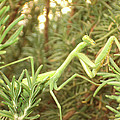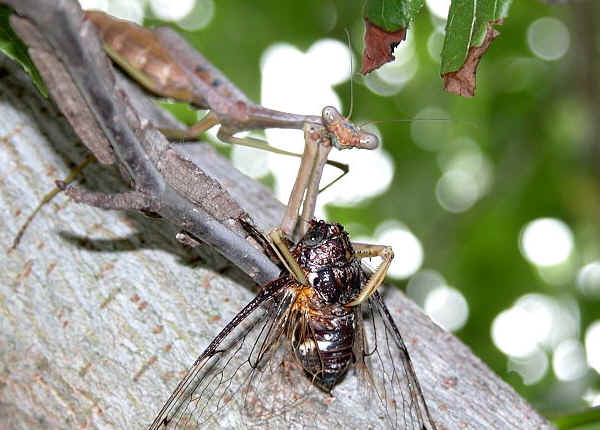
In addition, hummingbirds are relatively small, and a praying mantis can easily overpower and kill one. Hummingbirds are particularly vulnerable to praying mantises because they often hover near flowers while feeding, making them easy targets. Praying mantises are opportunistic predators that will eat whatever insect or small animal they can catch. Although they are not common predators of hummingbirds, they will attack and eat them if given the opportunity. Yes, praying mantis can kill hummingbirds. In some cases, praying mantis may even provide a benefit to hummingbirds by preying on other insects that could otherwise harm them or their eggs. The two species rarely interact as they occupy different habitats and use different prey sources. Overall, praying mantis are not considered a major threat to hummingbirds. They may even benefit the hummingbird population by consuming large numbers of insects that could otherwise potentially harm them or their eggs. In addition to eating other invertebrates and some small vertebrates, praying mantis have also been known to feed on nectar and sap. An adult praying mantis may also eat the eggs or nestlings of a hummingbird if they are able to get close enough. In the rare cases when praying mantis do consume hummingbirds, it is usually a young, injured or weakened hummingbird that is unable to escape. Additionally, hummingbirds fly quickly in erratic patterns which can make it difficult for a praying mantis to catch them. Hummingbirds are much larger than the average prey of a praying mantis and require far more energy to catch and consume. No, praying mantis do not typically eat hummingbirds. This involves raising their front legs in the air, and then quickly striking out with them at potential prey items.

They typically use a specialized “preying” technique to catch their prey. Praying mantis are carnivorous insects that feed mainly on other invertebrates like crickets, flies, beetles, caterpillars and spiders. The large compound eyes on their triangular-shaped head allow them to easily spot and track prey from a distance. The praying mantis is named for its “prayer-like” stance – it holds its long front legs close together in front of its body as if praying. They are commonly found in gardens, fields, forests, and other outdoor spaces across the world. Praying mantis are an iconic species of predatory insect known for their impressive hunting abilities and fascinating behavior.

This fascinating predator-prey relationship is something that scientists are still trying to understand. While praying mantises will eat a variety of insects, they have also been known to capture and consume hummingbirds. These creatures are skilled hunters with great eyesight, and they can take down prey that is much larger than themselves. One of the most interesting predators in the insect world is the praying mantis.


 0 kommentar(er)
0 kommentar(er)
